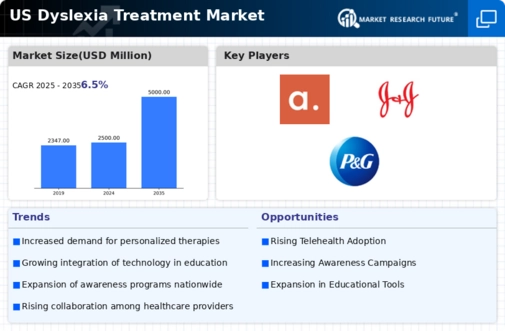US Dyslexia Treatment Market Summary
The US Dyslexia Treatment market is projected to grow from 2500 USD Million in 2024 to 5000 USD Million by 2035.
Key Market Trends & Highlights
US Dyslexia Treatment Key Trends and Highlights
- The US Dyslexia Treatment market is valued at 2500 USD Million in 2024.
- By 2035, the market is expected to reach 5000 USD Million, indicating substantial growth.
- The market is anticipated to expand at a CAGR of 6.5% from 2025 to 2035.
- Growing adoption of innovative treatment methodologies due to increased awareness of dyslexia is a major market driver.
Market Size & Forecast
| 2024 Market Size | 2500 (USD Million) |
| 2035 Market Size | 5000 (USD Million) |
| CAGR (2025 - 2035) | 6.5% |
Major Players
Apple Inc (US), Microsoft Corp (US), Amazon.com Inc (US), Alphabet Inc (US), Berkshire Hathaway Inc (US), Meta Platforms Inc (US), Tesla Inc (US), Johnson & Johnson (US), Visa Inc (US), Procter & Gamble Co (US)













